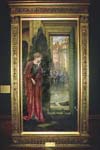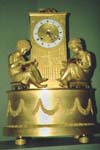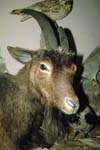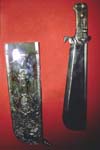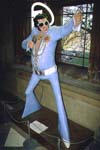
ABOUT THE MUSEUM
|
The Glasgow Art Gallery and Museum is one of nine buildings run by Glasgow Museums. The Museum was opened in 1901, and is now well into its second century. It is Glasgow's most popular museum, attracting nearly one million visitors each year. |
|
Situated at Kelvingrove Park, this magnificent red sandstone building is the home of a superb collection which covers science, history and art. The Museum's own extensive collection is often augmented by important exhibits on loan from other museums. The Museum makes an important contribution to education through
the Schools Museum Service. Over 100,000 Strathclyde schoolchildren
benefit from this service each year. There are also frequent organ recitals in the Museum's Centre
Hall. |
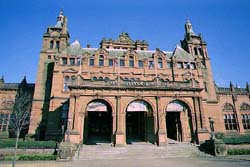 |
ARCHAEOLOGY
|
Cast of statue of Princess Amonirdis |
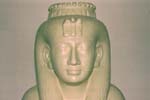 |
The archaeology collection includes objects from Egypt, Cyprus, the Italian-Greek colonies and Scotland. Notable individual collections are those of Sir Robert Hamilton Lang (Cypriot objects); James Stevenson (Italian-Greek pottery); and Ludovic MacLellan Mann (Scottish objects). |
ARMS AND ARMOUR
|
The Arms and Armour section includes several important collections bequeathed by private collectors. The largest individual collection is that of Robert Lyons Scott, which includes some 800 items. Other notable individual collections are those of Charles Edward Whitelaw, (Scottish weapons); Alexander E. Martin (firearms); and Charles C.S. Parsons (edged weapons). |
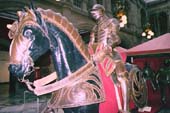 |
English Greenwich
Armour for Man and Horse |
ETHNOGRAPHY
|
Thunderbird Totem Pole Vancouver Island, Canada, 1992. |
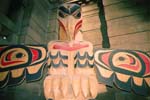 |
The Museum's Ethnography display consists of nearly 800 objects from all corners of the globe, including Africa, Oceania, the Americas and Asia. Many of the objects were acquired by explorers, missionaries, anthropologists and teachers on their travels across the globe. The collection includes objects donated by the renowned missionary David Livingstone. |
NATURAL HISTORY
|
Natural History is the main subject of the Science Department at the Art Gallery and Museum. The collection reflects the three main areas of Natural History: geology, botany and zoology. A variety of techniques is used to preserve and display the collection, including taxidermy, dry and wet preservation and modelling. |
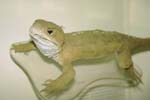 |
Tuatara Lizard, New Zealand
|
SCULPTURE
|
Thomas Marble by |
 |
The sculpture collection consists of approximately 300 works from the late 18th century to the present day. The largest part of the collection is that of the British School, in particular the late Victorian and Edwardian periods. The collection also includes works from the French School, by such sculptors as Degas, Rodin and Renoir. |
|
All photographs on this site
are copyright Allan Webb. |
